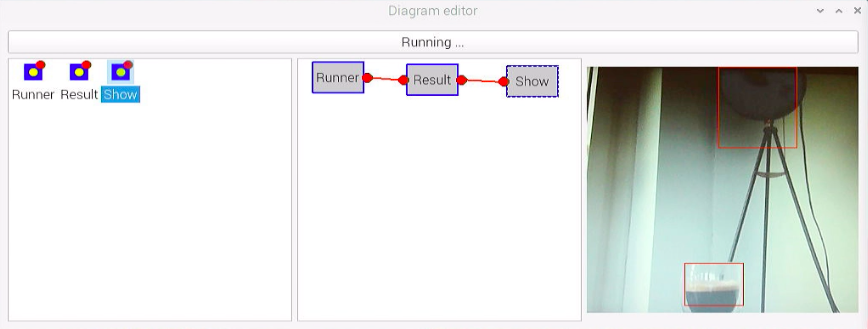naqs-for-quantum-chemistry
This repository contains the codebase developed for the paper Autoregressive neural-network wavefunctions for ab initio quantum chemistry.
 |
 |
|---|---|
| (a) Architecture of a neural autoregressive quantum state (NAQS) | (b) Energy surface of N2 |
TL;DR
Certain parts of the notebooks relating to generating molecular data are currently not working due to updates to the underlying OpenFermion and Psi4 packages (I'll fix it!) - however the experimental results of NAQS can still be reproduced as we also provide pre-generated data in this repository.
If you don't care for now, and you just want to see it running, here are two links to notebooks that will set-up and run on Colab. Just note that Colab will not have enough memory to run experiments on the largest molecules we considered.
-
run_naqs.ipynb
: Run individual experiments or batches of experiments, including those to recreate published results.
-
generate_molecular_data_and_baselines.ipynb
:
- Create the
[molecule].hdf5and[molecule]_qubit_hamiltonian.pklfiles required (these are provided for molecules used in the paper in the molecules directory.) - Solve these molecules using various canconical QC methods using Psi4.
- Create the
Overview
Quantum chemistry with neural networks
A grand challenge of ab-inito quantum chemistry (QC) is to solve the many-body Schrodinger equation describing interaction of heavy nuclei and orbiting electrons. Unfortunatley, this is an extremely (read, NP) hard problem, and so a significant amout of research effort has, and continues, to be directed towards numerical methods in QC. Typically, these methods work by optimising the wavefunction in a basis set of "Slater determinants". (In practice these are anti-symetterised tensor products of single-electron orbitals, but for our purposes let's not worry about the details.) Typically, the number of Slater determinants - and so the complexity of optimisation - grows exponentially with the system size, but recently machine learning (ML) has emerged as a possible tool with which to tackle this seemingly intractable scaling issue.
Translation/disclaimer: we can use ML and it has displayed some promising properties, but right now the SOTA results still belong to the established numerical methods (e.g. coupled-cluster) in practical settings.
Project summary
We follow the approach proposed by Choo et al. to map the exponentially complex system of interacting fermions to an equivilent (and still exponentially large) system of interacting qubits (see their or our paper for details). The advantage being that we can then apply neural network quantum states (NNQS) originally developed for condensed matter physics (CMP) (with distinguishable interacting particles) to the electron structure calculations (with indistinguishable electrons and fermionic anti-symettries).
This project proposes that simply applying techniques from CMP to QC will inevitably fail to take advantage of our significant a priori knowledge of molecular systems. Moreover, the stochastic optimisation of NNQS relies on repeatedly sampling the wavefunction, which can be prohibitively expensive. This project is a sandbox for trialling different NNQS, in particular an ansatz based on autoregressive neural networks that we present in the paper. The major benefits of our approach are that it:
- allows for highly efficient sampling, especially of the highly asymmetric wavefunction typical found in QC,
- allows for physical priors - such as conservation of electron number, overall spin and possible symettries - to be embedded into the network without sacrificing expressibility.
Getting started
In this repo
notebooks
-
run_naqs.ipynb
: Run individual experiments or batches of experiments, including those to recreate published results.
-
generate_molecular_data_and_baselines.ipynb
:
- Create the
[molecule].hdf5and[molecule]_qubit_hamiltonian.pklfiles required (these are provided for molecules used in the paper in the molecules directory.) - Solve these molecules using various canconical QC methods using Psi4.
- Create the
experiments
Experimental scripts, including those to reproduced published results, for NAQS and Psi4.
molecules
The molecular data required to reproduce published results.
src / src_cpp
Python and cython source code for the main codebase and fast calculations, respectively.
Running experiments
Further details are provided in the run_naqs.ipynb notebook, however the published experiments can be run using the provided batch scripts.
>>> experiments/bash/naqs/batch_train.sh 0 LiH
Here, 0 is the GPU number to use (if one is available, otherwise the CPU will be used by default) and LiH can be replaced by any folder in the molecules directory. Similarly, the experimental ablations can be run using the corresponding bash scripts.
>>> experiments/bash/naqs/batch_train_no_amp_sym.sh 0 LiH
>>> experiments/bash/naqs/batch_train_no_mask.sh 0 LiH
>>> experiments/bash/naqs/batch_train_full_mask.sh 0 LiH
Requirements
The underlying neural networks require PyTorch. The molecular systems are typically handled by OpenFermion with the backend calculations and baselines requiring and Psi4. Note that this code expects OpenFermion 0.11.0 and will need refactoring to work with newer versions. Otherwise, all other required packages - numpy, matplotlib, seaborn if you want pretty plots etc - are standard. However, to be concrete, the linked Colab notebooks will provide an environment in which the code can be run.
Reference
If you find this project or the associated paper useful, it can be cited as below.
@article{barrett2021autoregressive,
title={Autoregressive neural-network wavefunctions for ab initio quantum chemistry},
author={Barrett, Thomas D and Malyshev, Aleksei and Lvovsky, AI},
journal={arXiv preprint arXiv:2109.12606},
year={2021}
}



